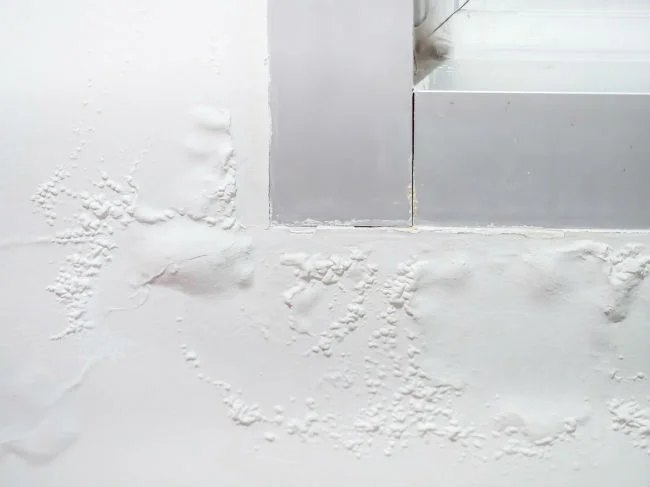Discovering a bubble on your ceiling can be a perplexing situation, especially when there is no visible sign of water. In this article, we’ll delve into the potential causes behind the phenomenon of a “Bubble On Ceiling But No Water.” Understanding these causes is crucial for homeowners to address the issue promptly and prevent any potential damage to their property.

Exploring the Enigma of Bubble On Ceiling But No Water:
The appearance of a bubble on the ceiling without any apparent water source can leave homeowners scratching their heads. To unravel this mystery, let’s examine some common reasons behind this peculiar occurrence and how to deal with it effectively.
Possible Causes of Bubble On Ceiling But No Water:
- Air Pockets in Paint or Wallpaper: One of the simplest explanations for a bubble on the ceiling is the presence of air pockets trapped during the painting or wallpaper installation process. These bubbles can create the illusion of a larger issue.
- Humidity and Temperature Fluctuations: Changes in humidity and temperature can lead to the expansion and contraction of building materials. This can result in the formation of bubbles on the ceiling, especially in areas prone to significant temperature variations.
- Roofing Issues: While there may be no visible water, roofing issues such as a small leak, poor ventilation, or trapped moisture in the attic can cause the ceiling material to bubble. Addressing potential roofing problems is crucial to prevent future water damage.
- Condensation: Excessive condensation can occur in areas with poor ventilation or insulation. The accumulation of moisture in the ceiling material can lead to the formation of bubbles over time.
Addressing the Issue:
Once the potential causes are identified, homeowners can take specific steps to address the issue and prevent further complications.
Steps to Address a Bubble On Ceiling But No Water:
- Evaluate the Surface: Begin by examining the affected area. If the bubble is uniform and consistent, it is more likely related to painting or wallpaper. Inconsistencies may indicate underlying issues.
- Check for Roof Leaks: Inspect the roof for any signs of leaks or damage. Pay attention to areas around vents, chimneys, and skylights, as these are common entry points for water.
- Improve Ventilation: Enhance ventilation in the affected area by installing exhaust fans or ensuring proper air circulation. This can help minimize humidity and reduce the likelihood of condensation.
- Consult Professionals: If the issue persists or remains unclear, it’s advisable to consult with professionals, such as a roofing contractor or a home inspector, to conduct a thorough assessment.
Preventive Measures for Future:
Taking proactive measures can help homeowners prevent the recurrence of bubbles on the ceiling and maintain a healthy and visually appealing home interior.
Preventive Tips:
- Regular Maintenance: Schedule regular roof inspections and maintenance to address any potential issues before they escalate.
- Proper Ventilation: Ensure adequate ventilation in all areas of your home, especially in spaces prone to humidity, such as bathrooms and kitchens.
- Professional Installation: When painting or installing wallpaper, hire experienced professionals to minimize the likelihood of trapped air pockets.
- Timely Repairs: Address any signs of water damage promptly to prevent further issues and maintain the integrity of your home’s structure.
Read too: Understanding and Tackling Ceiling Condensation Stains: Unveiling the Mystery
Conclusion:
Discovering a bubble on the ceiling without water can be a perplexing experience, but understanding the potential causes is the first step toward a solution. By evaluating the surface, checking for roof leaks, improving ventilation, and seeking professional assistance when needed, homeowners can address the issue effectively and take preventive measures for the future. Regular maintenance and timely repairs contribute to a healthy home environment and ensure the longevity of your property.